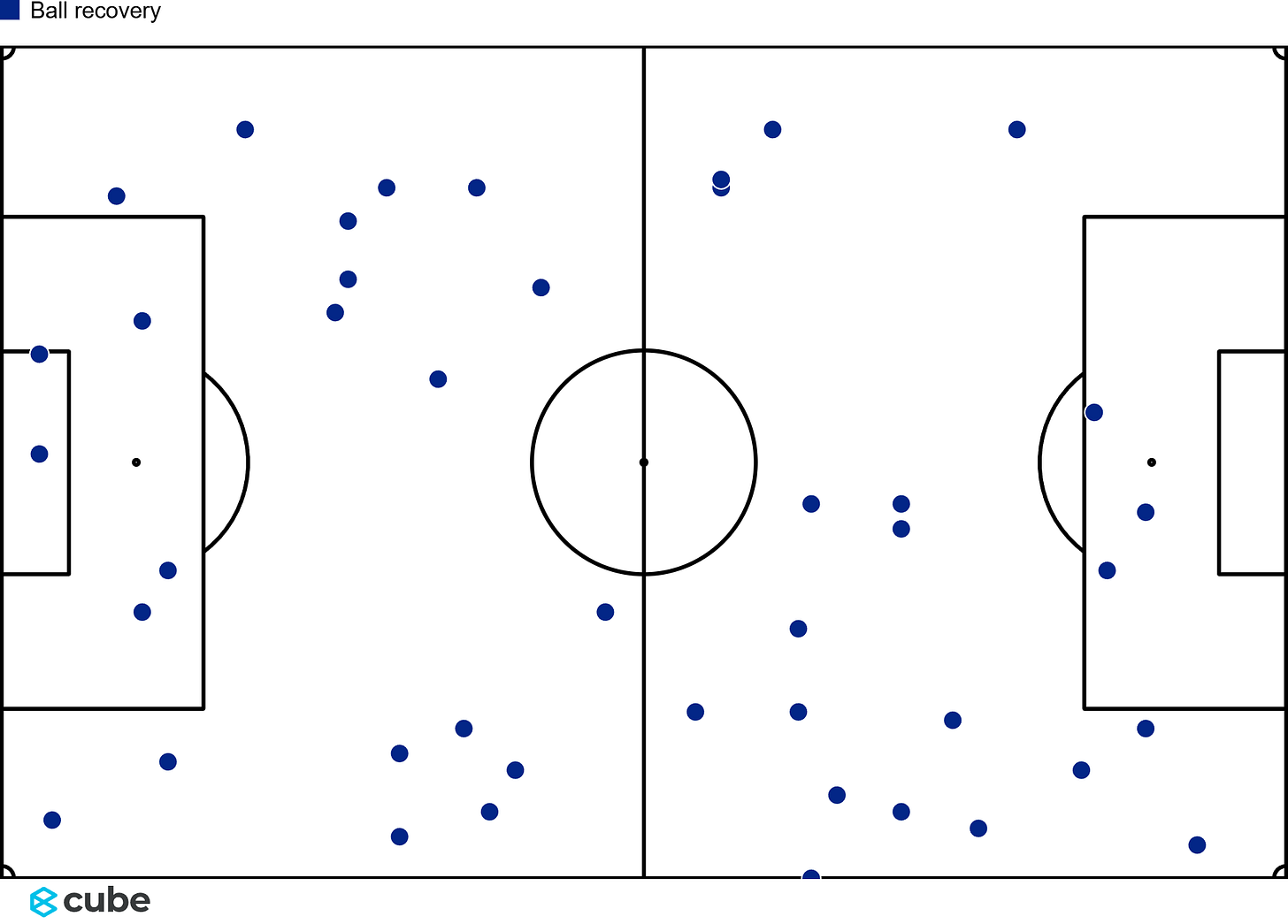Liverpool’s Failing Structure and the Numbers Behind City’s Win
Key visuals reveal where Liverpool failed to disrupt City’s patterns
Even if the final scoreline suggested dominance, this was not the 3-0 thrashing it appeared on paper. Liverpool were beaten at the Etihad Stadium, and while the result flatters Manchester City, it also exposes deeper issues for the Reds.
Game state control without scoreboard influence
Football often resists clear narratives. Manchester City missed a penalty at 0-0, handed to them after yet another costly mistake by Ibrahima Konaté. Giorgi Mamardashvili came up big to stop Erling Haaland’s attempt, a huge moment that should have lifted Liverpool. If we exclude the penalty, City’s non-penalty xG stood at just 1.01. That does not suggest dominance.
Haaland registered just one shot aside from the penalty, a 0.19 xG effort that became a goal. That was City’s most valuable open-play chance. The remaining goals came through two deflections and one spectacular solo effort by Jérémy Doku.
Defensively, Liverpool held up reasonably well in the numbers, limiting City’s big chances as they had done against Real Madrid and Aston Villa. However, those limitations meant little when luck and individual errors still gifted goals.
Offensive issues continue for Liverpool
Liverpool’s attack failed to build any rhythm or real danger. With an xG of just 0.79, the output was well below the level required to trouble Manchester City. They managed seven shots, only one of which tested the goalkeeper, a speculative effort from Dominik Szoboszlai from long range.
The game tilted based on the scoreline, but Liverpool were ineffective in their pressing, especially in the middle third. City’s usual attacking trio of Cherki, Doku, and Foden operated in close quarters, and Bernardo Silva was excellent once again. The Reds struggled to disrupt City’s rhythm, a familiar issue against Pep Guardiola’s well-drilled teams.





